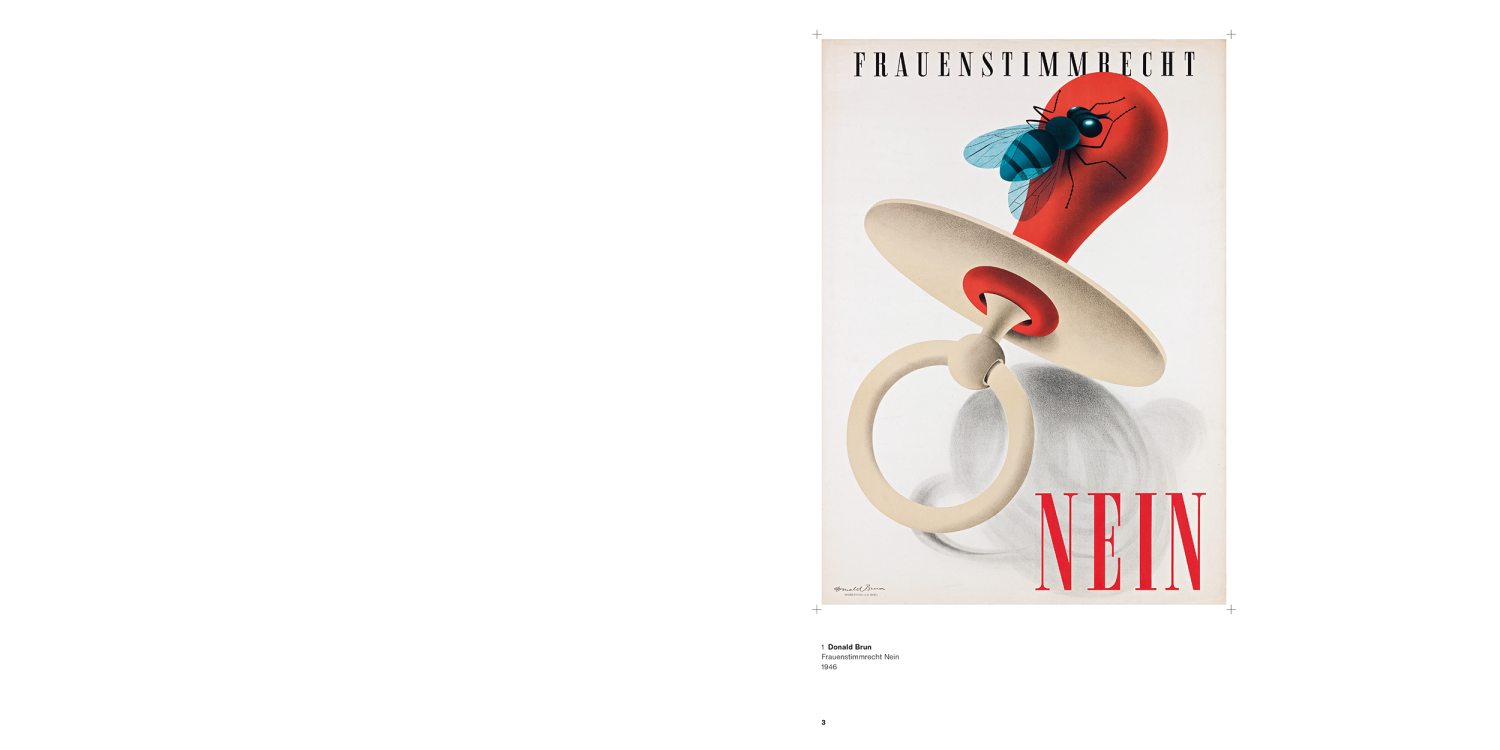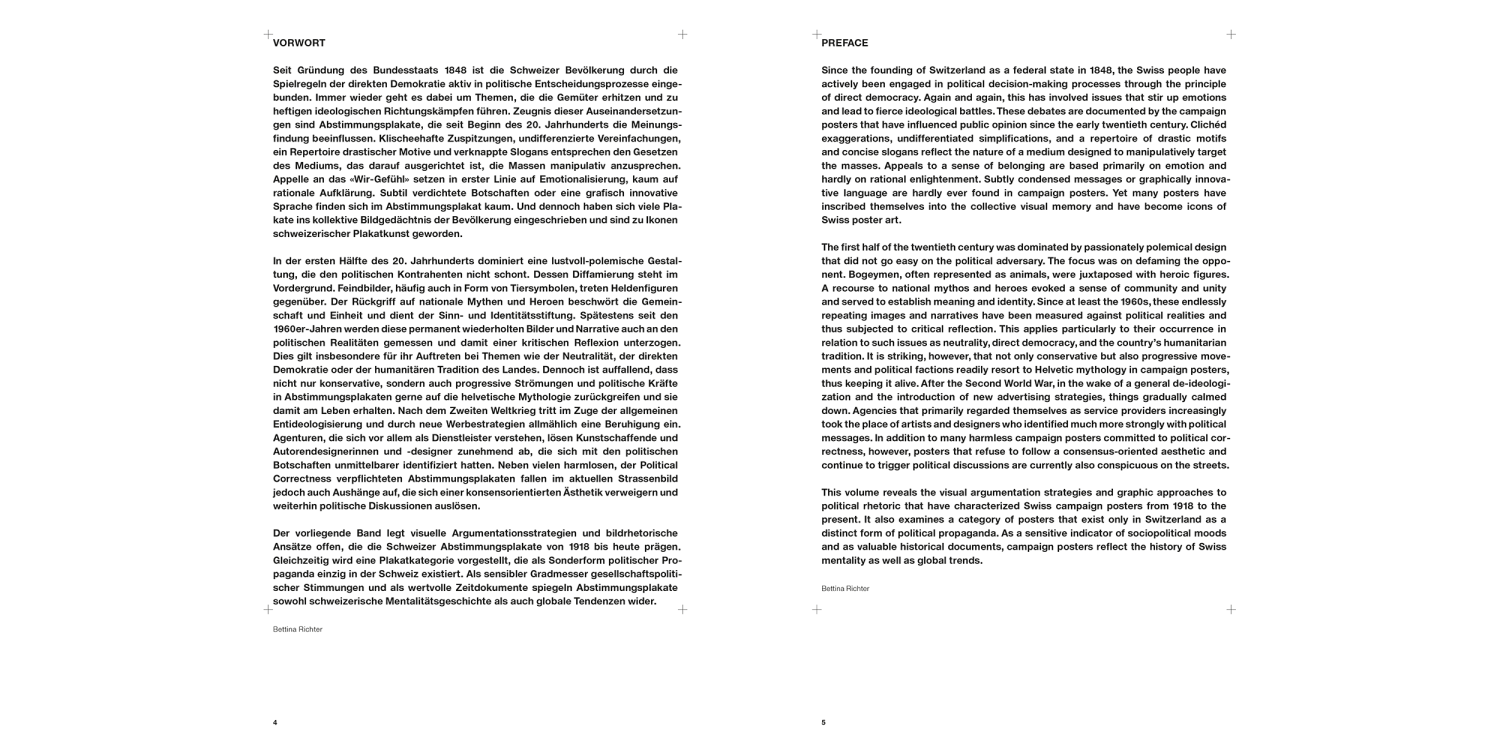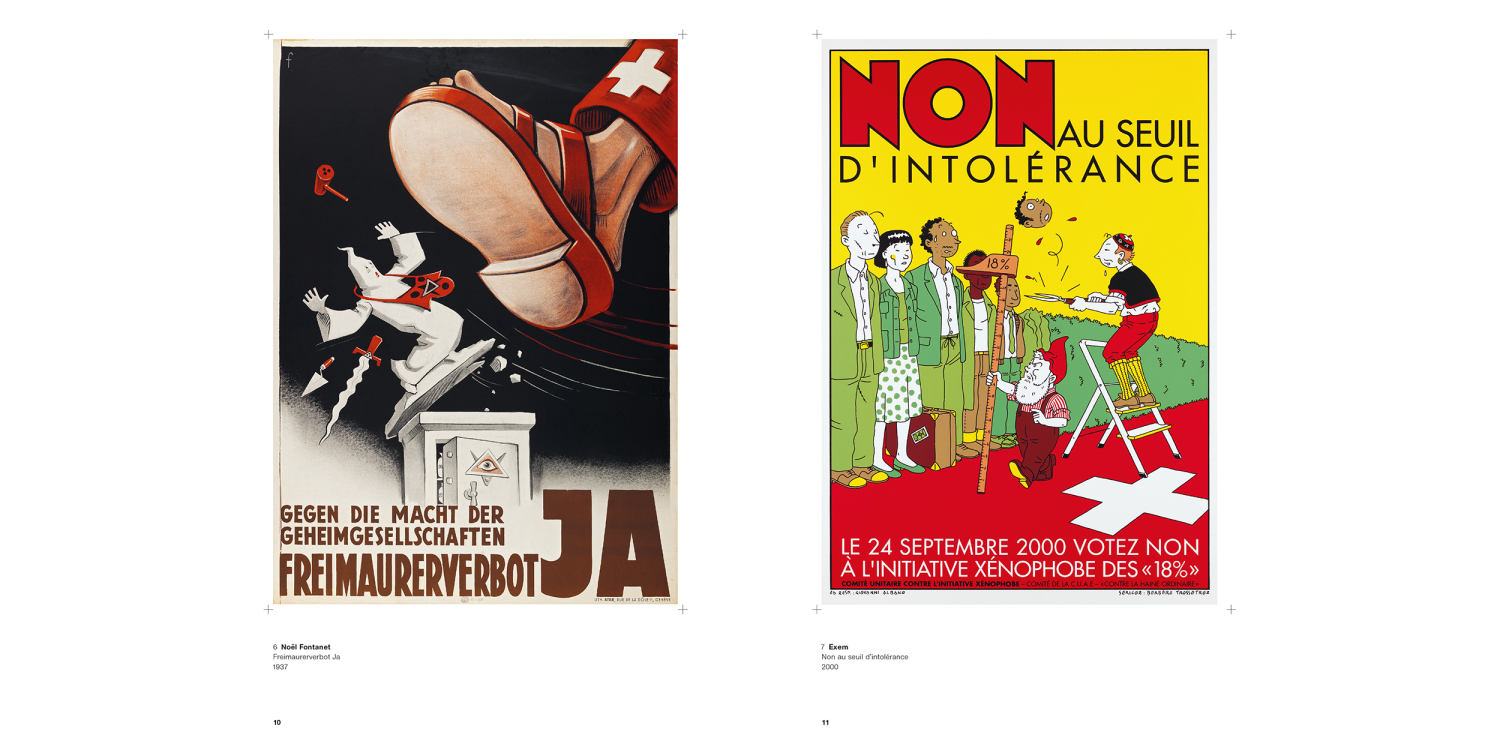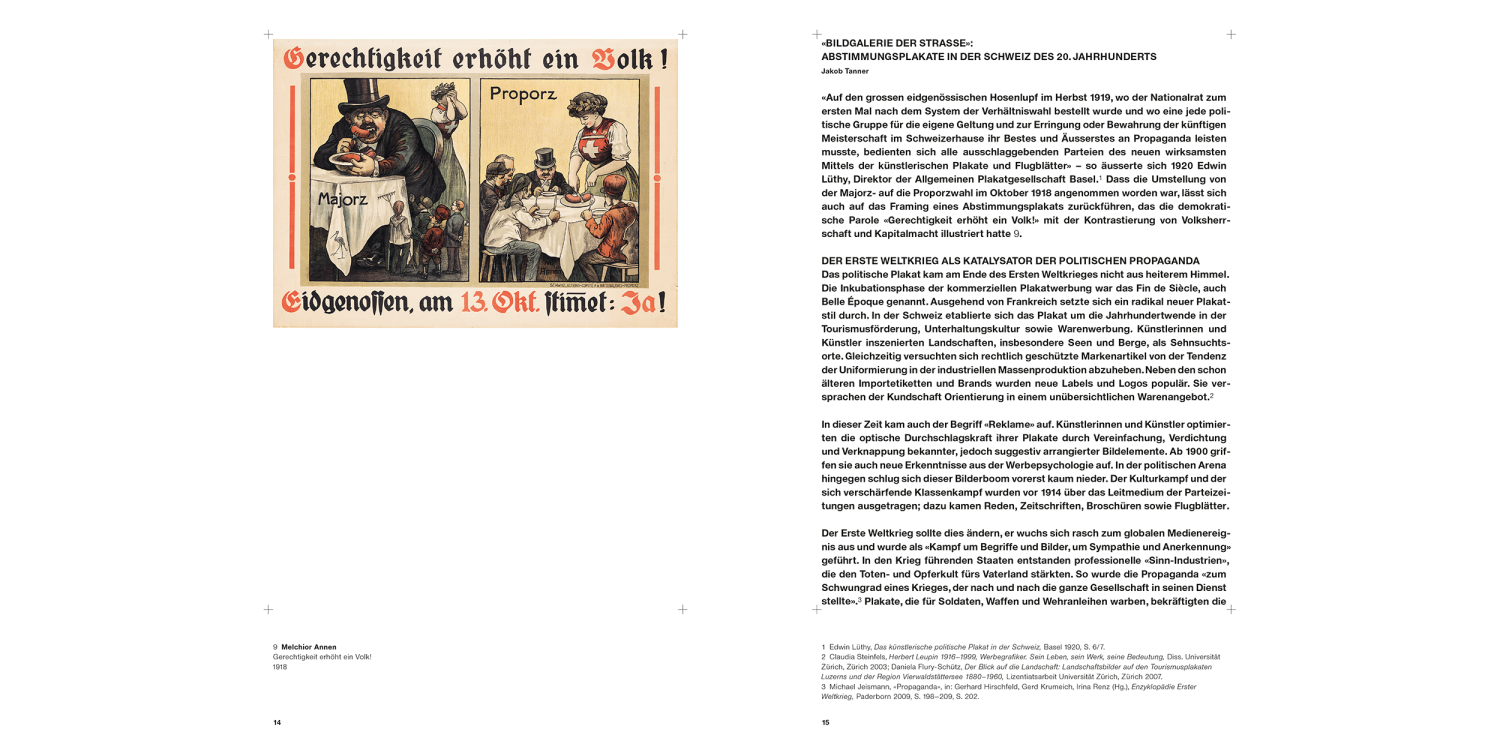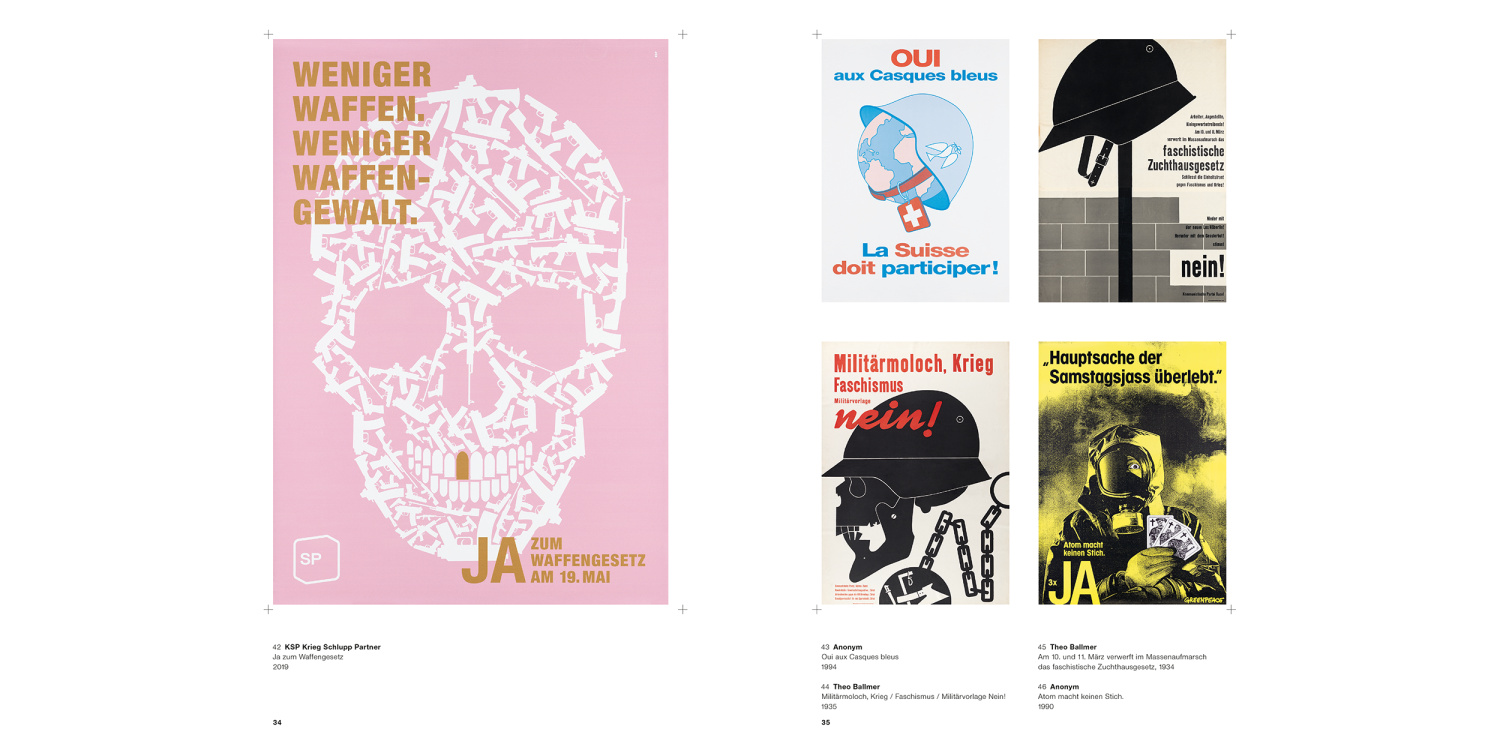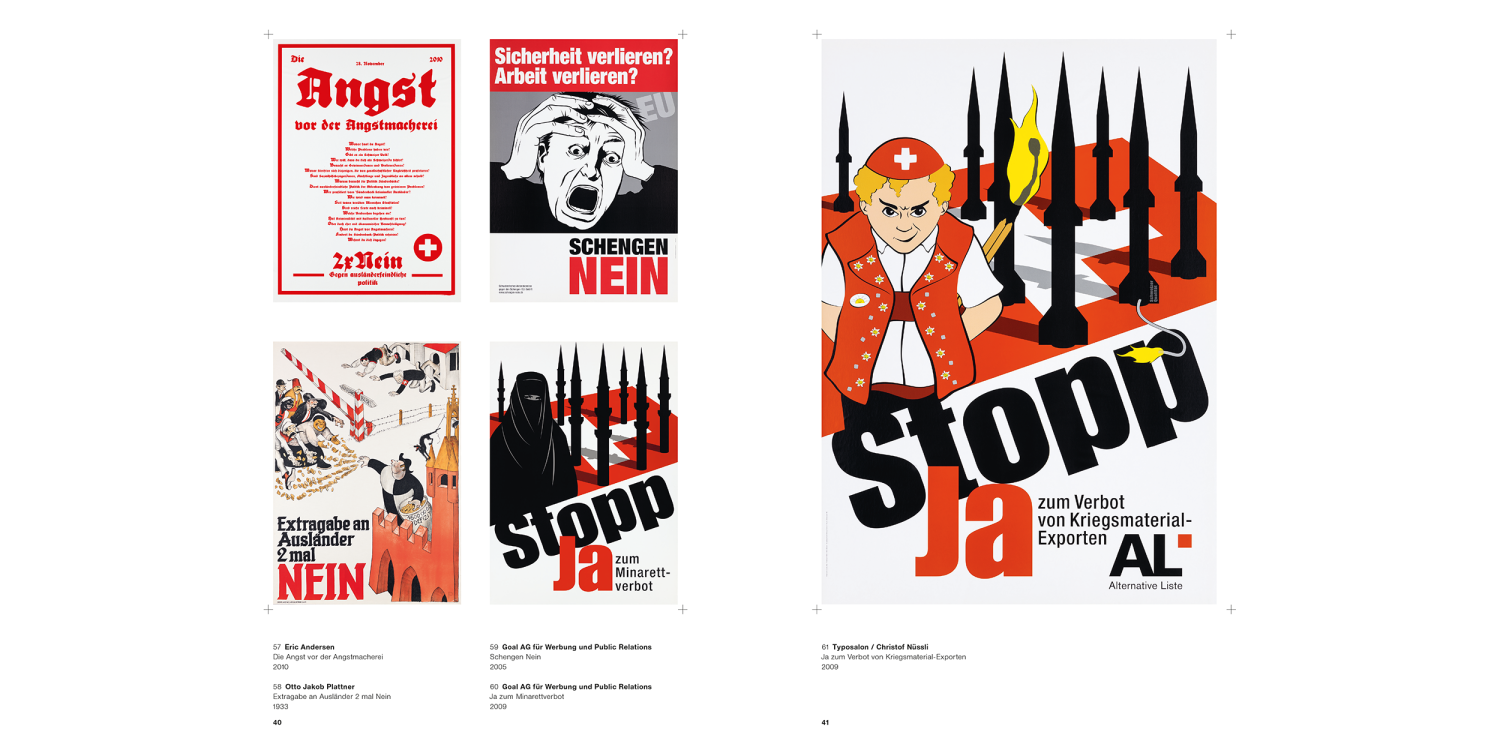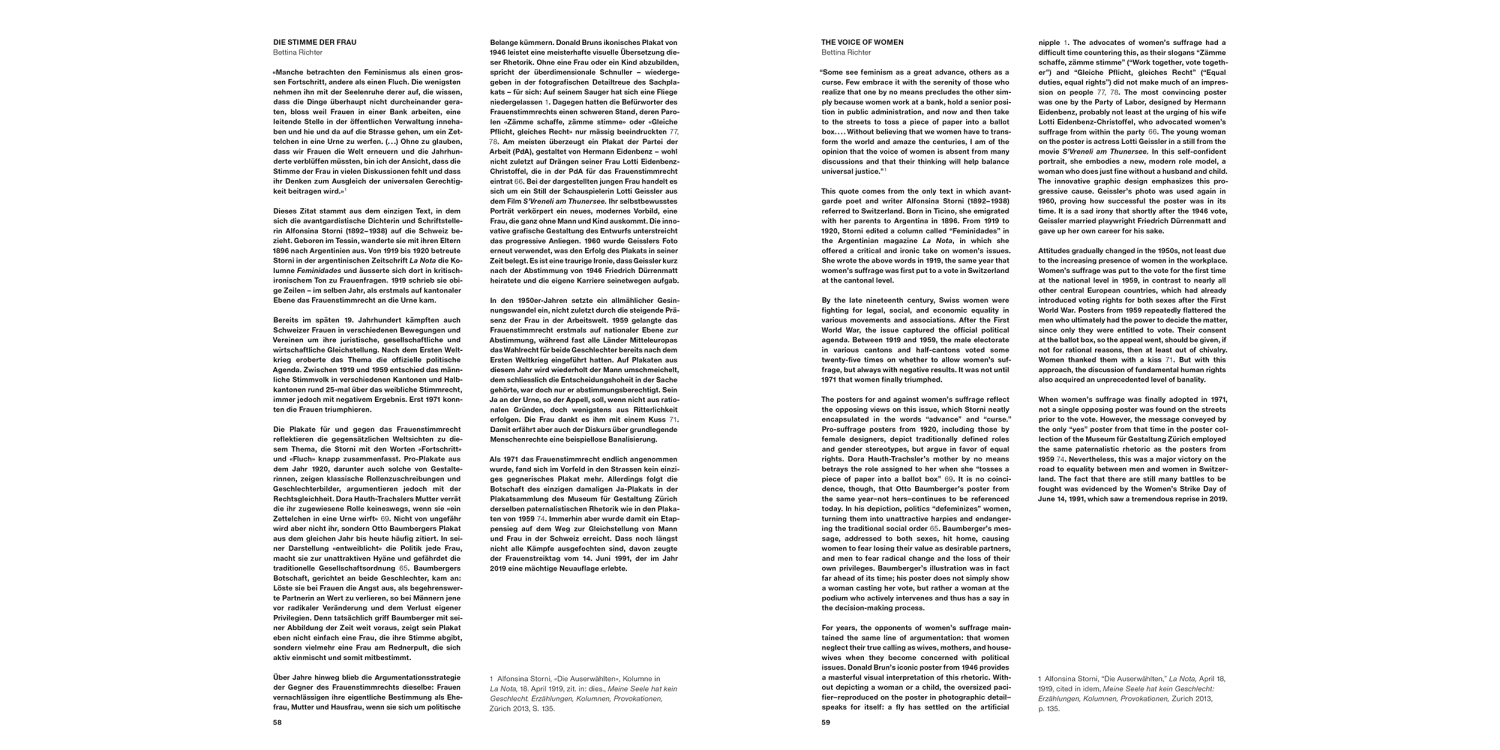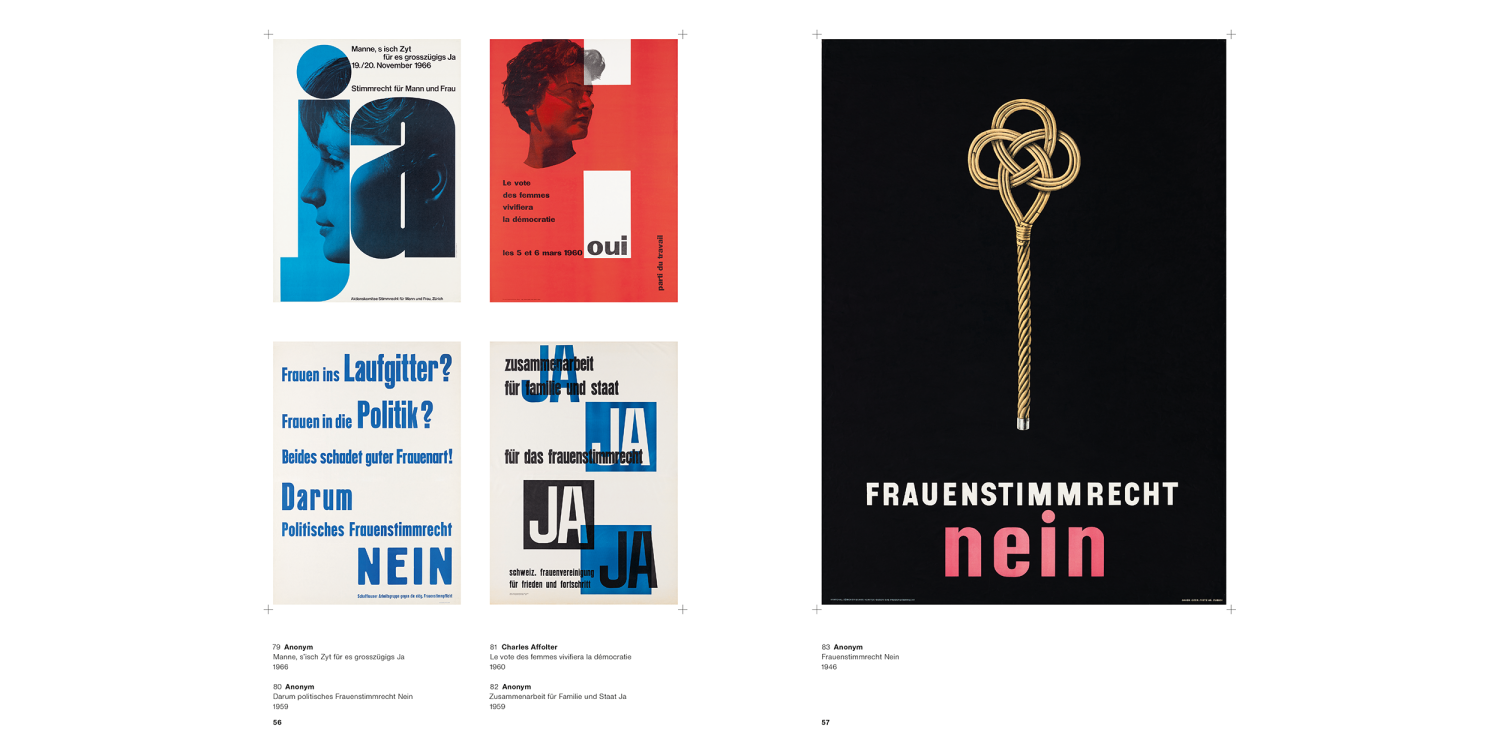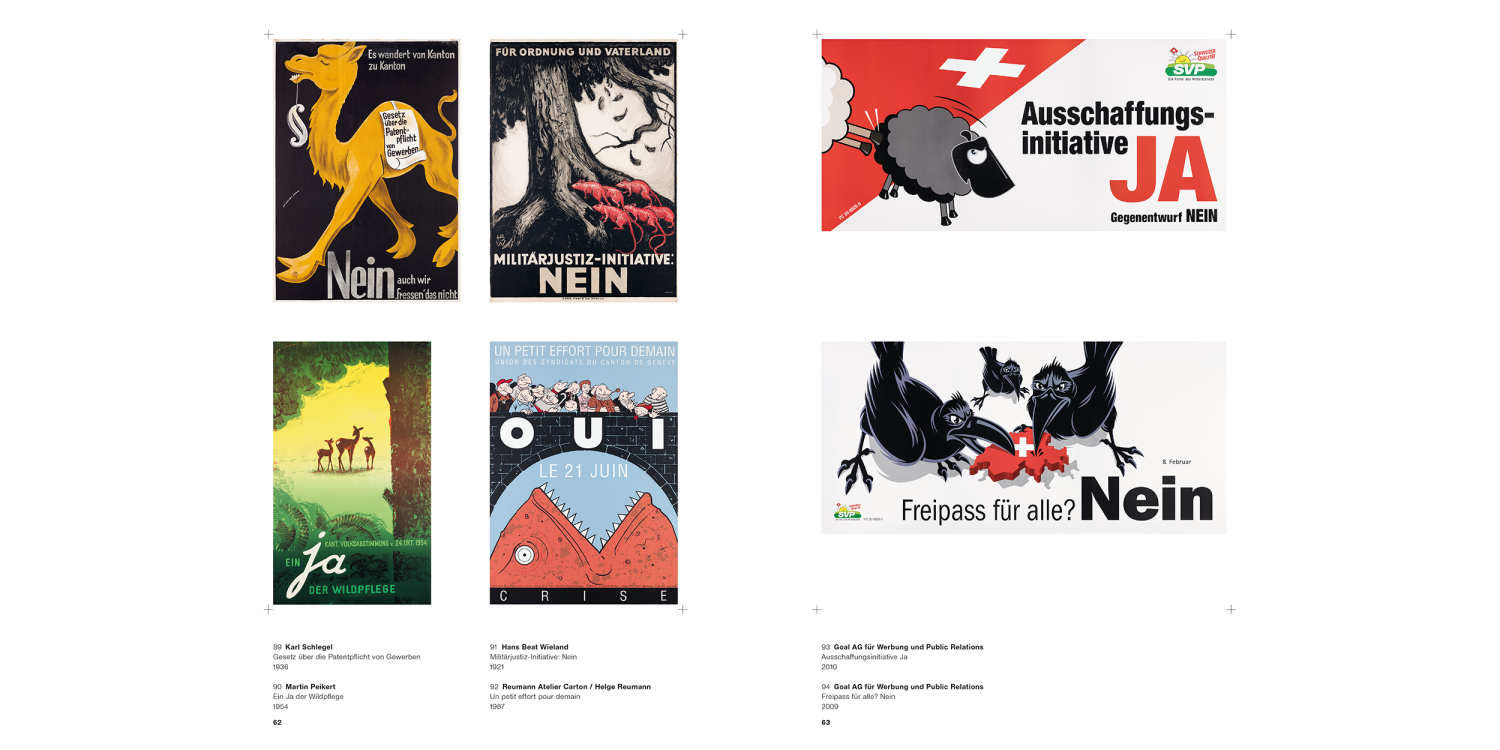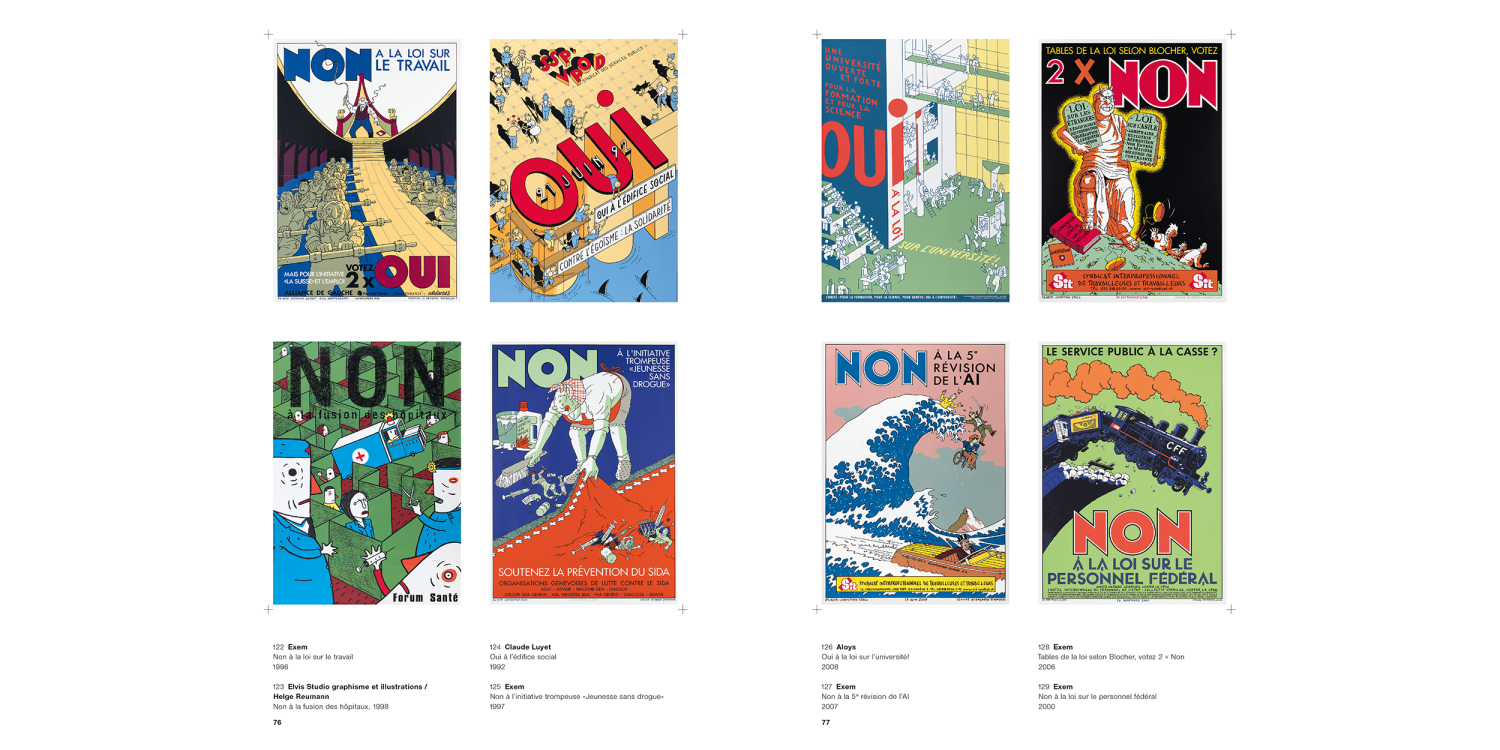
Ja! Nein! Yes! No!
Swiss Posters for Democracy
The Swiss population is called upon to participate actively in political decision-making processes through regular campaigns. These campaigns are often concerned with issues that stir up heated emotions and lead to ideological battles. Campaign posters, which have influenced opinion-making since the beginning of the 20th century, bear testimony to direct democracy. This special form of political propaganda – prominently associated with Switzerland – is a sensitive indicator of socio-political moods and reflects both national mentalities and global tendencies.
Ja! Nein! Yes! No! Swiss Posters for Democracy reveals the visual argumentation strategies and rhetorical approaches that have shaped the Swiss campaign poster from 1918 to the present. Clichéd exaggerations, undifferentiated simplifications, a repertoire of drastic motifs and abridged slogans correspond to the laws of the medium, which is oriented towards a manipulative appeal to the masses. Appeals to a sense of unity focus primarily on emotionalization rather than rational enlightenment. Subtly condensed messages or graphically innovative language are hardly to be found in campaign posters. And yet many renowned designers created works that have inscribed themselves in the collective visual memory of the Swiss population and have become icons of Swiss poster design.
The Swiss population is called upon to participate actively in political decision-making processes through regular campaigns. These campaigns are often concerned with issues that stir up heated emotions and lead to ideological battles. Campaign posters, which have influenced opinion-making since the beginning of the 20th century, bear testimony to direct democracy. This special form of political propaganda – prominently associated with Switzerland – is a sensitive indicator of socio-political moods and reflects both national mentalities and global tendencies.
Ja! Nein! Yes! No! Swiss Posters for Democracy reveals the visual argumentation strategies and rhetorical approaches that have shaped the Swiss campaign poster from 1918 to the present. Clichéd exaggerations, undifferentiated simplifications, a repertoire of drastic motifs and abridged slogans correspond to the laws of the medium, which is oriented towards a manipulative appeal to the masses. Appeals to a sense of unity focus primarily on emotionalization rather than rational enlightenment. Subtly condensed messages or graphically innovative language are hardly to be found in campaign posters. And yet many renowned designers created works that have inscribed themselves in the collective visual memory of the Swiss population and have become icons of Swiss poster design.
This book is part of the Poster Collection series. Get the complete series here
